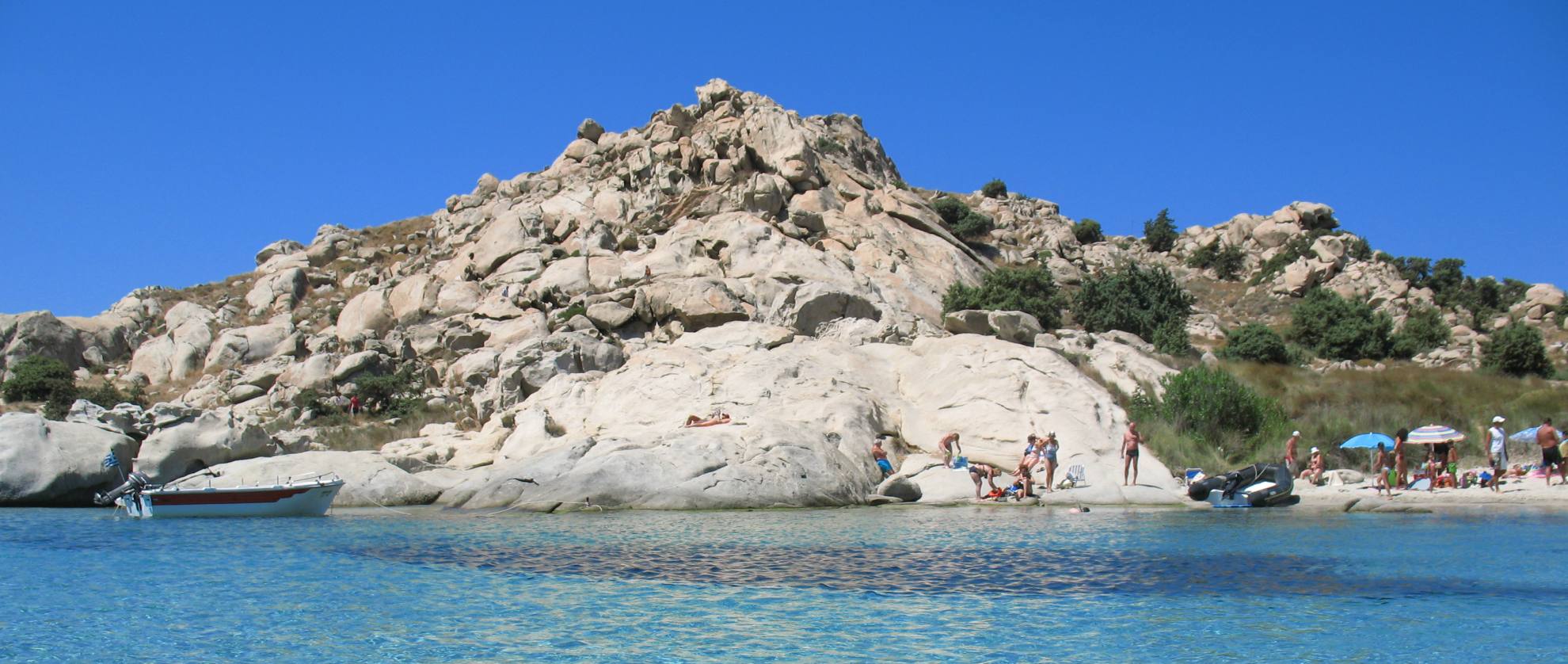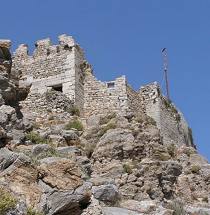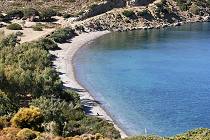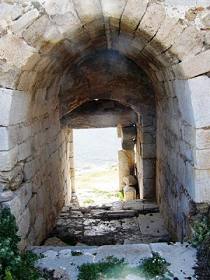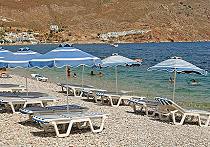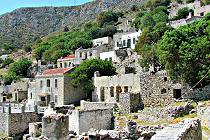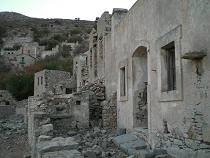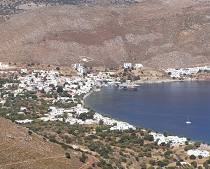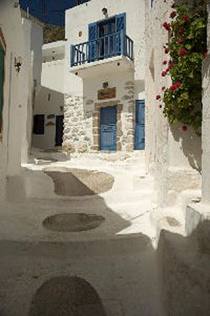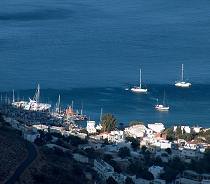Tilos - Quiet and unspoiled
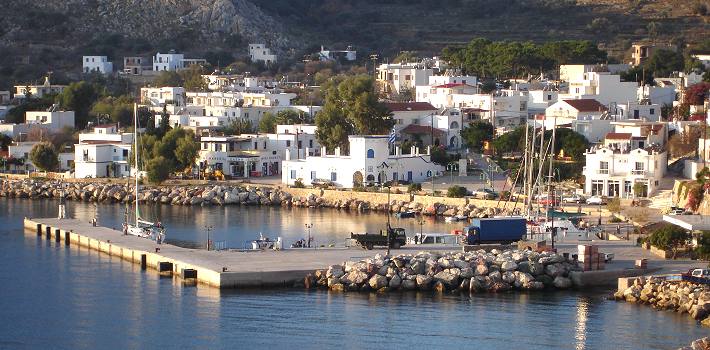
Tilos is a small, blissfully quiet and unspoiled Greek Island with friendly people and wonderful walking country. Although Tilos looks rugged, inland it shelters groves of fig trees, walnuts and olives.
 Tilos is an island inhabited from very ancient times, as documented by the findings of the Charkadio cave (Mesolithic era). It was connected with the Minoans, rulers of the sea, as well as with the Myceneans who settled in the island around 1600 BC. Then the islanders together with the citizens of Lindos founded the colony of Ghela in Sicily.
Tilos is an island inhabited from very ancient times, as documented by the findings of the Charkadio cave (Mesolithic era). It was connected with the Minoans, rulers of the sea, as well as with the Myceneans who settled in the island around 1600 BC. Then the islanders together with the citizens of Lindos founded the colony of Ghela in Sicily.
The excavations of paleontologists brought to the light Neolithic tools and bones of dwarf elephants and deer. The deer were 140.000 years old and the elephants 45.000 old.
-
Getting There
Ferries: Tilos is connected with Piraeus with ferry. The island is also connected with Rhodes, Kos, Halki, Kalymnos.
Air: Nearest airport is Rhodes Island international airport. -
Getting Around
There is a bus service from Livadia to Megalo Horio and Agios Antonios.
Car and motorbike rental is available.
Tilos Beaches
Eristos, long sandy beach covered with trees, 1200 m long, maybe the best in Tilos
Agios Antonios, nice beach
Livadia, nice pebble beach that gradually becomes sand
Other beaches, Lethra and Skafi (North), Agios Stephanos and Theologos (South)
Tilos Sightseeing
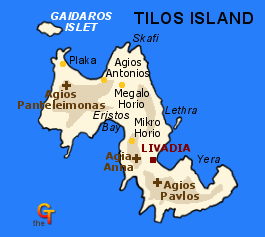
Ancient monuments and sites of archeological interest
The ancient walls, parts of which are preserved in Megalo Chorio.
In the position Kena near Megalo Chorio a carved tomb was discovered full of golden objects, now transferred in the museum of Rhodes.
The 20 little churches painted with frescoes are built with local stone. Their characteristic features are a horseshoe-shaped arch and a barrel-shaped roof. They were built from the 13th to the 16th century.
Fortresses
In Megalo Chorio you can see the Fortress of Misaria, a medieval building of 1366 founded by the Knights of Saint John above the Charkadio cave. The ruins of several dwellings and of a little church are preserved. At the foot of the fortress you can see the preserved vestiges of a Byzantine settlement and of several little churches of the 13th and the 15th century covered with hagiographies. In the gully there is a spring, irrigating the cultivations of citrus trees.
The Fortress is at the same place where the acropolis of the ancient city was, whose shrine was dedicated to Pythios Apollo and Poliada Athina. The Fortress and the settlement built in the slope of the hill formed the inhabited part of Tilos until the Protochristian era. On the remains of the ancient temple, you see today the half-ruined church of Archangel Mihail with its 16th century worn-out frescoes. The view from the Fortress is striking. The best time to visit it is in late-afternoon, as you can also admire the sunset over the bay of Aghios Andonios. Outside the fortress there are water reservoirs and the ruins of the old village whose churches were also covered with hagiographies. The Fortress was restored by the Knights.
Monasteries and Churches
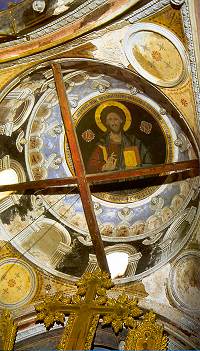 The Monastrery of Agios Pandeleimon (picture on the right), 9 km to the west, on a slope of a steep hill, is an oasis with the ever-green garden around it. Since 1800 a huge cypress stands as its guard and custodian. The katholikon of the monastery is adorned by a hagiography revealed in August 1986, picturing the founder Jonas with the monastery in his hand. It is a building of 1470-80, and includes a tower, the cells, warehouses and other rooms around the katholikon. It was restored in 1703 and 1824 respectively.
The Monastrery of Agios Pandeleimon (picture on the right), 9 km to the west, on a slope of a steep hill, is an oasis with the ever-green garden around it. Since 1800 a huge cypress stands as its guard and custodian. The katholikon of the monastery is adorned by a hagiography revealed in August 1986, picturing the founder Jonas with the monastery in his hand. It is a building of 1470-80, and includes a tower, the cells, warehouses and other rooms around the katholikon. It was restored in 1703 and 1824 respectively.
The wooden-carved iconostasis is of the 18th century. The pebbled yard was constructed in 1843. Professor Charis Koutelakis who has carried out extensive research in the island does not exclude the hypothesis that maybe the monastery was built with material coming from an ancient temple. And as the existence of a temple of Poseidon in the island is being discussed - documented by an inscription and a reference by Strabo - this could be the ideal place for the temple. Aghios Pandeleimon is the protector of the island.
The church of Archangel Mihail (Taxiarchis) is in Megalo Chorio. The big silver icons from the homonymous church of the fortress have been transferred here. The wooden-carved iconostasis, the pulpit and the throne, are works of the 19th century.
The church of Panaghia Theotokissa is situated at the higher quarter of the settlement.
The little post-Byzantine church of Agios Ioannis Theologos, is also in Megalo Chorio and has remarkable frescoes.
The church of Panagiia Kamariani, is near the area of Plaka where you can find a water spring (the Tilians were very proud of this spring).
The church of Panagia Politissa is in Misoskali near Livadia, and its important cemetery dating from the 3rd century AD.
The little church of Agios Ioannis is near Livadia.
The church of Agios Stefanos is in a little harbour near Livadia.
Touring Tilos Island
Megalo Horio
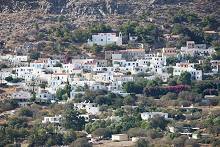 It extends at the foot of the hill where the fortress is built, below the ruins of the old village, abandoned little by little at the beginning of the 19th century when the danger of the pirates diminished and the dwellers took the liberty to descend downhill.
The capital town of the island preserves numerous elements of the traditional architecture.
It extends at the foot of the hill where the fortress is built, below the ruins of the old village, abandoned little by little at the beginning of the 19th century when the danger of the pirates diminished and the dwellers took the liberty to descend downhill.
The capital town of the island preserves numerous elements of the traditional architecture.
Its stone-houses are densely built around the church of Taxiarchis. Its name (literally meaning big village) is first mentioned in Turkish documents of 1620 and is probably due to the big plain extending as far as the bay of Eristos, the ancient harbor. Megalo Chorio has 160 inhabitants. It is situated 7 km to the NW of the port, Livadia.
Livadia
The houses are built in the inlet of a big bay and extend over a small but fertile valley.
If you follow the coastal road you get to the medieval port of the island, the harbor of Aghios Stefanos, with the lighthouse. A little further, at a distance of 2.5 km, you find the rural settlement Ghera and a spring known as: 'tou Despoti to nero'.
110 people live in Livadia situated 7 km to the SE of Megalo Horio, the capital town.
The picturesque fishermen' settlement of Agios Antonios is 2 km to the NW. Its port is a haven for fishing and leisure boats. The beach is dominated by the mill and the little church of Aghios Andonios.
Mikro Horio
Mikro Horio is 3km to the NW. It was completely abandoned by its inhabitants in 1960 as they chose to settle in Livadia. Mikro Chorio was inhabited from the epoch of the Knights of Saint John (15th century). The ruins of a small fortress-observatory are preserved as well as the ruins of its stone-houses that were once built in full harmony with the landscape around.
Useful Info
First Aids: 22410 44210
Police: 22410 44222
Port Authority: 22410 44350
